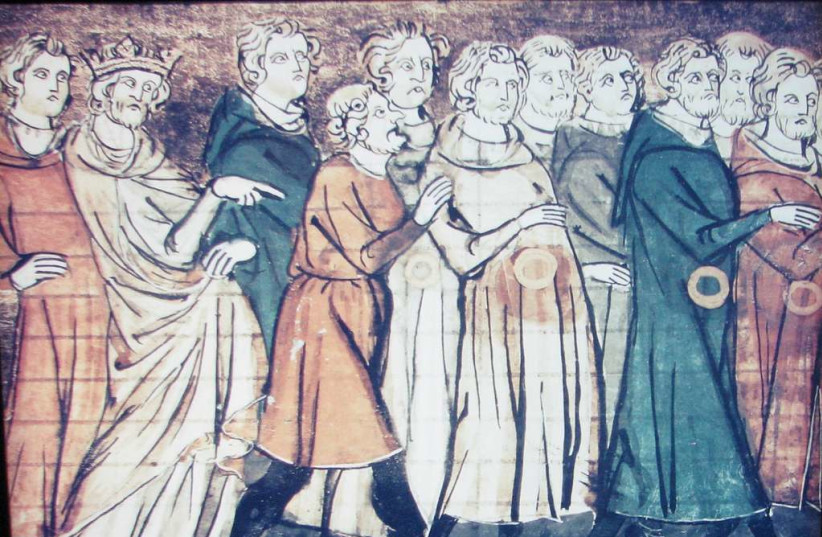The English city of York was the site of an infamous antisemitic massacre of the city's Jewish community in the Medieval era, but it turns out that the community bounced back after just 20 years to become a once-again thriving center of English Jewry, according to research from the University of York.
The true and forgotten history of York's Jewish community is the subject of the newest research from the University of York's Heritage360 Streetlife project.
This project has seen considerable archival evidence scanned and analyzed, leading to reconstructions of homes and locations of synagogues and interfaith cooperation.
The history of the Jews of York
Antisemitism began to flare up in England ahead of the Third Crusade which was a time of religious zealotry. Tensions in York, in particular, were high, erupting into violence on the night of March 16, 1190.
Facing an angry and violent mob, the 150 members of the local Jewish community took shelter in Clifford's Tower at York Castle, where the mob besieged them. The community's rabbi, Yom Tov of Joigny, supposedly urged the community to kill themselves rather than face the mob. While most of them did so, some chose to surrender and promised to convert to Christianity, only to meet their deaths at the hands of the mob.

The story of the massacre of York's Jews is well-known, but what many have forgotten is that the story doesn't end there.
The researchers from the University of York have managed to find the homes of the community's leading members, Leo Episcopus and Aaron of York, both of whom had served as the leaders of the entire English Jewish community. In fact, during the 1230s and 1240s, Aaron of York was actually considered the richest man in England.
They had lived in homes originally built by Christian landlords, so they would have looked the same as any other home. However, Aaron of York's home had something else: A synagogue, though it wasn't something visible to someone walking by on the street.
Aaron of York was also active among some of the leading figures of Christian life in the city as well, as shown by charters recovered from the Durham Cathedral Archives.
According to these charters, Aaron of York had helped the Yorkish clergy purchase what would become the city's Guildhall, the center of civic life in the Medieval city. This is backed up by a signed and dated charter, which actually preserved Aaron of York's own handwriting.
This was likely just one of several major civic infrastructure projects Aaron of York helped the city's clergy with, all in exchange for land for the city's Jewish cemetery.
All of this research and information has helped put together a better digital reconstruction of Jewish life in York.
"The digital reconstructions offer an accessible visual interpretation of how the Jewish community lived side-by-side with their Christian neighbors, including on York's most high-status medieval street," project lead Dr. Louise Hampson said in a statement.
However, this brief period of good fortune wouldn't last long, with antisemitism never having left England. In 1218, England became the first country in Europe to require Jews and Muslims to identify themselves through their dress, and Jews were forced to wear identifying badges.
The process to expel the Jews was started in 1275 with the Statute of Jewry which outlawed moneylending to all Jews. The Jews were told they had to acclimate to the new law within 15 years, but antisemitism made getting other jobs extremely difficult for them.
On July 18, 1290, King Edward I finally signed the Edict of Expulsion, and all remaining debts owed to Jews were signed over to his name. Jews were told to leave England or risk execution. For the next 300 years, Jews could only visit England with special permits, although it is believed that some Jews may have returned to live in England during that time and hidden their religion.
Jews were only allowed to fully return to England when the doors were unofficially reopened by Lord Protector Oliver Cromwell in 1655.
Ariella Marsden contributed to this report.
